Brussels
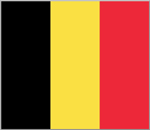
Chocolate, chips and European politics

Sitting between the great imperial nations of France and the Netherlands as it does, Belgium didn’t have much of a national identity until becoming independent itself in 1830. The country still has two reasonably distinct halves; Dutch-speaking Flanders in the north and French-speaking Wallonia in the south, around the melting pot of Brussels in the centre. It is well known for many of its products such as lace, chocolate, waffles, diamonds, Tin Tin and Eurocratic bureaucracy.
I visited Brussels for a long weekend from London, taking the Eurostar there and back, and also including a visit to Luxembourg. Belgium wasn’t all that high up my list of places to go, but I did want to take a trip on the Eurostar and I’d been to Paris quite recently. To my surprise I was very impressed with Brussels, there was much more to it than I’d expected and the city is truly beautiful. That said, it has its fair share of weirdos too, but it was good to see overall and I’m glad I’ve visited the capital of the United States of Europe.

The centrepiece of Brussels is the stunning Grand Place, surrounded on all sides by dollhouse style Guild Halls, and also shown in the feature image at the top of this page. Its encompassing nature makes it difficult to do justice by photography, so I took just an element of it here, with the late summer cafes still in full swing. The city squares of Glasgow, Madrid and Moscow are certainly outdone for opulence here.
Statues adorn the façade of the Hotel de Ville on the south side of the Grand Place. It is the City Hall and certainly one of the grandest buildings I’ve ever seen, festooned with carvings.
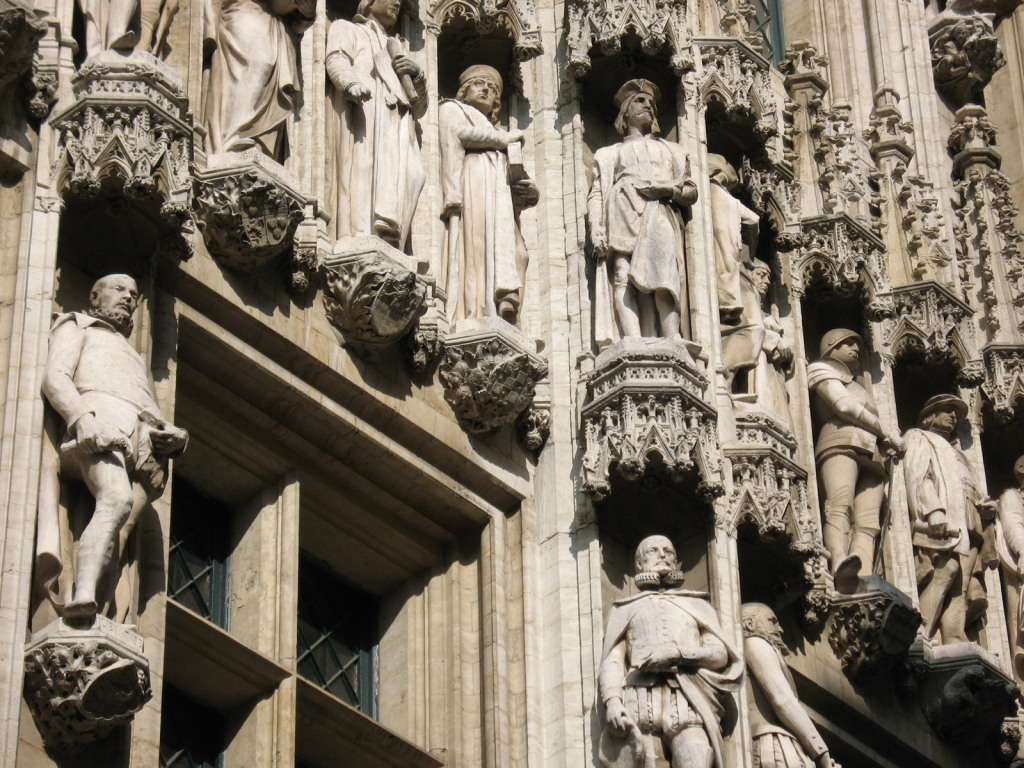

Just off the Grand Place is the statue of Everard ‘t Serclaes, who drove the Flemish from the city in the mid 14th century. It is said that to touch his arm brings good luck, and there must be plenty of lucky people around here because his arm has worn clean through.
Perhaps Brussels’ most famous attraction, and certainly among its cheekiest is the Manneken Pis, a small lad happily answering nature’s call on Rue de l’Etuve. He is regularly dressed up in an effort to protect his modesty – today he was taking time out from the baker’s shop.
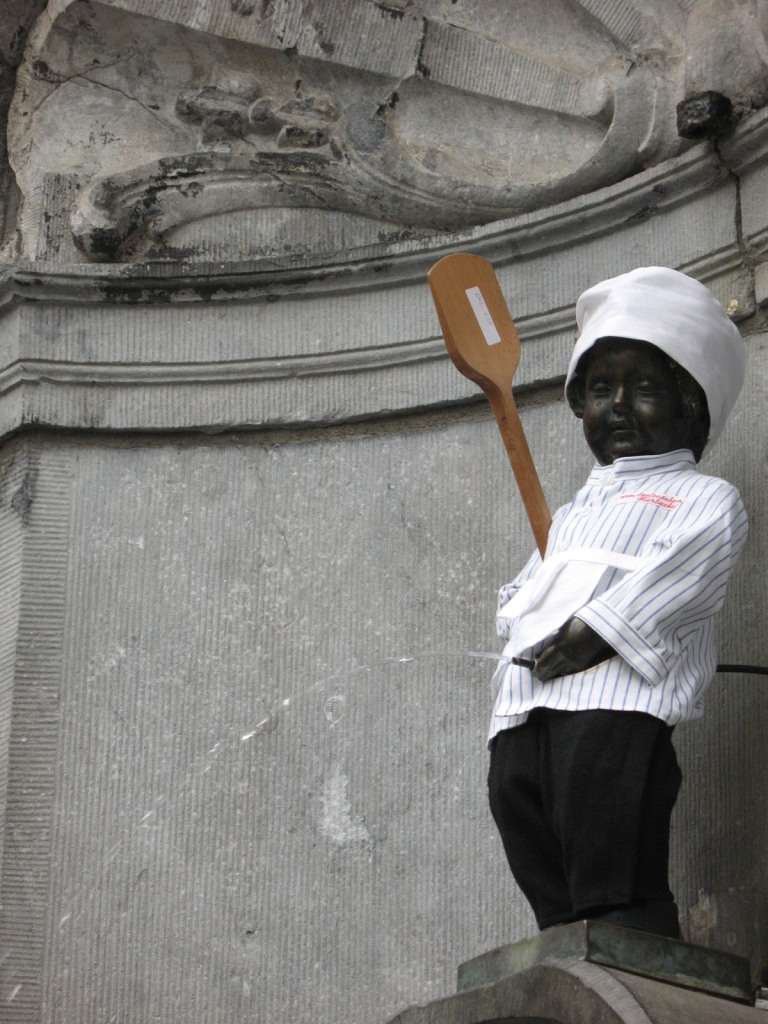
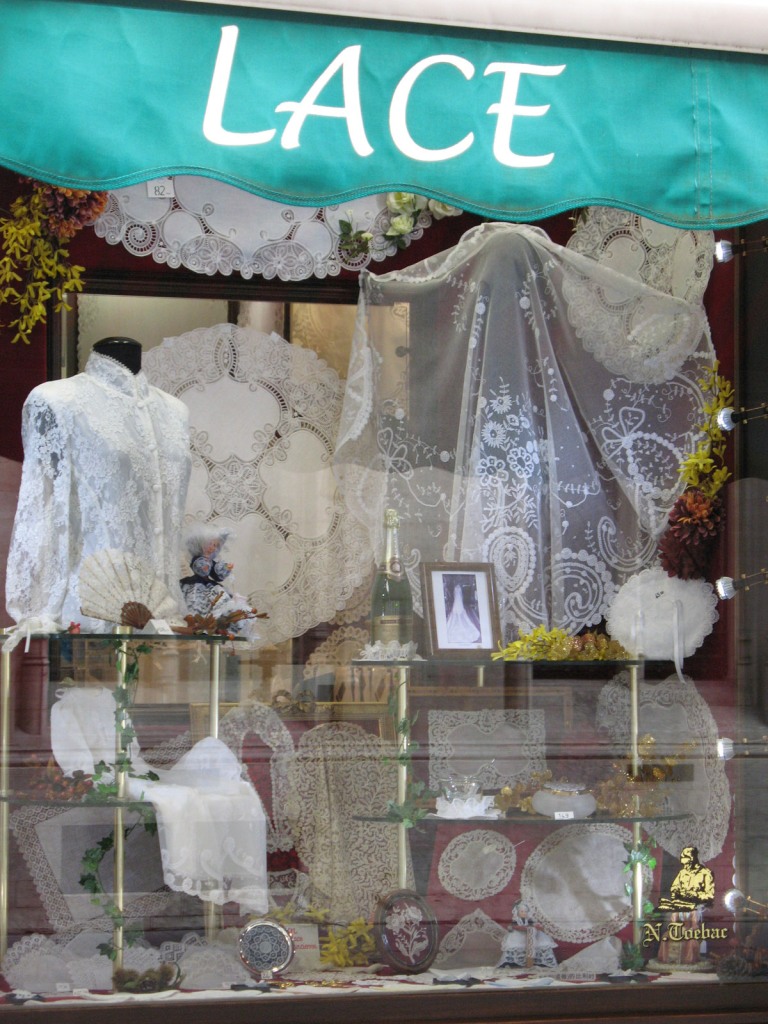
Belgium is famous for a number of its products, the first of which I encountered was Belgian lace. This particular establishment is Nicole Toebac, and sits just off the Grand Place.
Shortly thereafter I came across a street vendor selling Belgian waffles – could I resist? Not a chance.

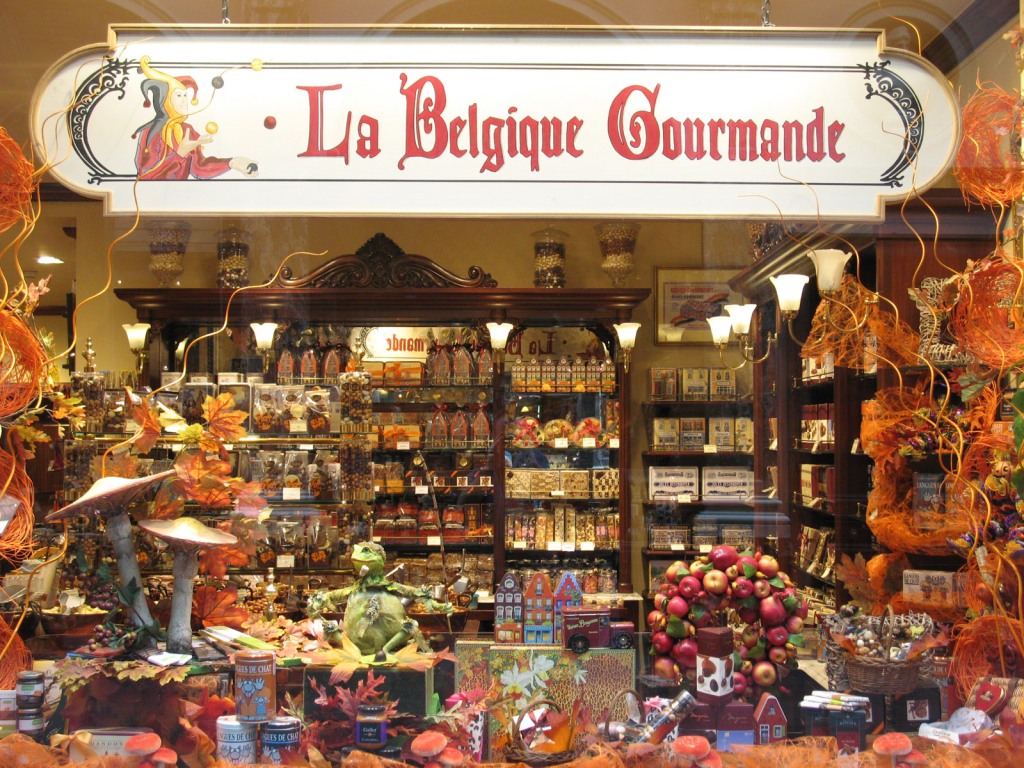
Belgian chocolate was next on the agenda, from the famous La Belgique Gourmande shop in the Galeries Royales Saint-Hubert. In the basement they have an odd museum featuring an entire avenue of Manneken Pis(es).
Belgium’s most famous son, Tin Tin makes his way down the fire escape of this building in the mural on Rue de l’Etuve.
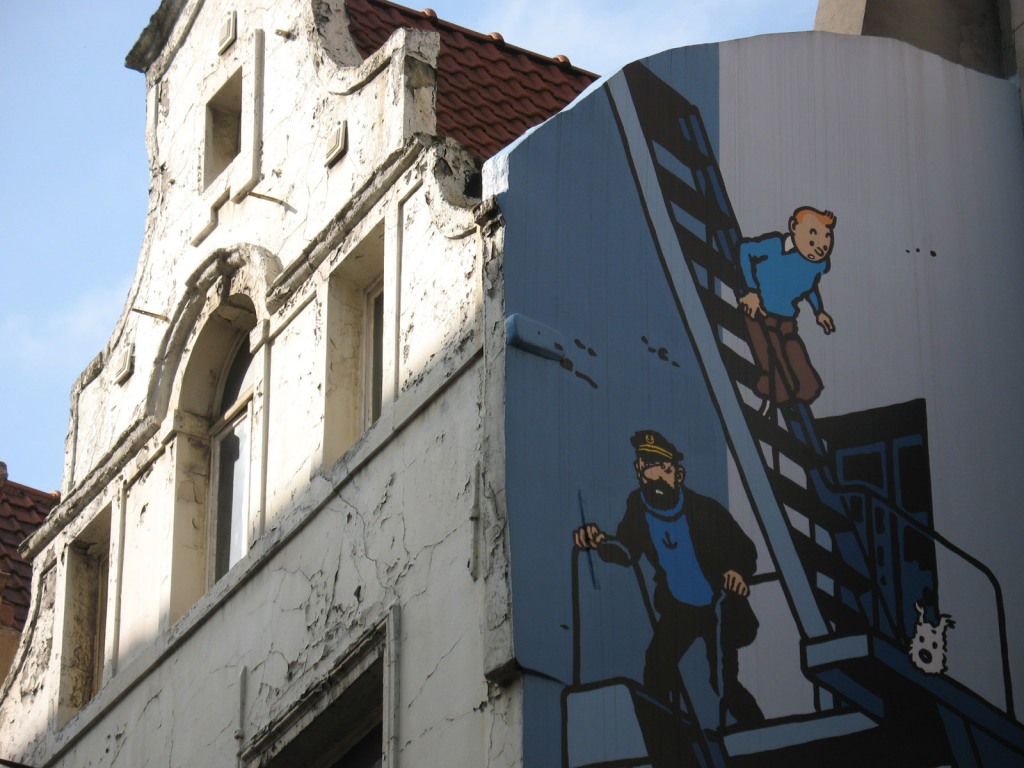
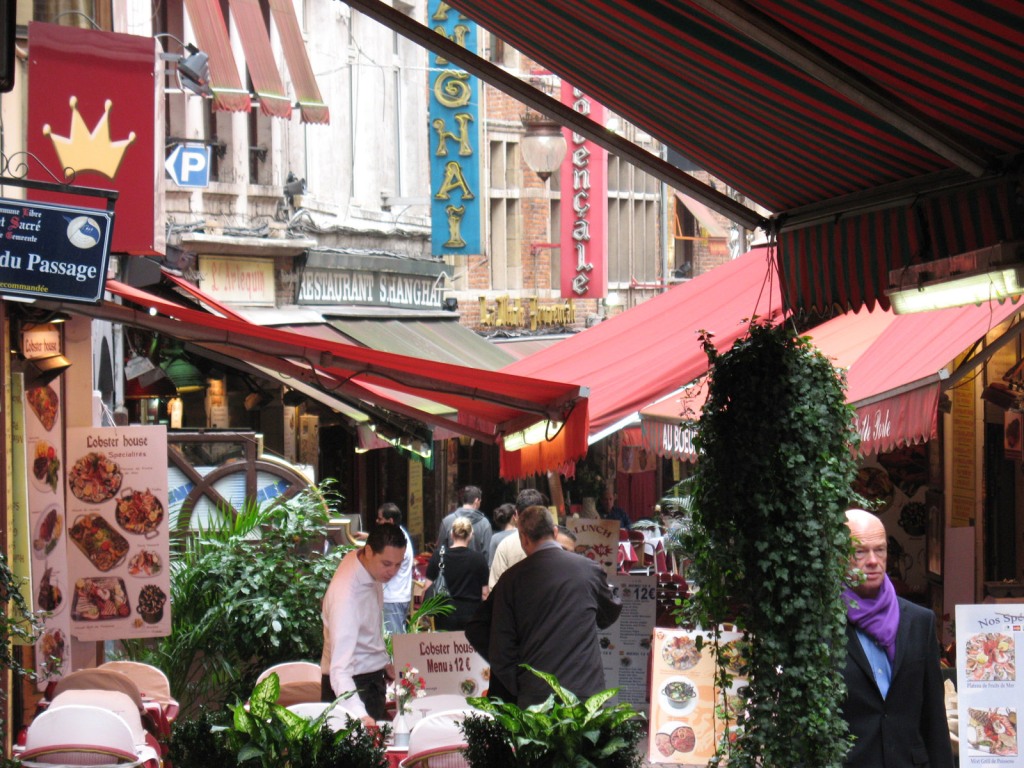
North of the Grand Place is a series of narrow streets hosting all manner of restaurants, but the best choice has to be mussels in a white wine sauce from Chez Leon, all you can eat. They didn’t count on me showing up.
Horsemen stand guard at Place de l’Albertine, up towards the Eurocrat district.
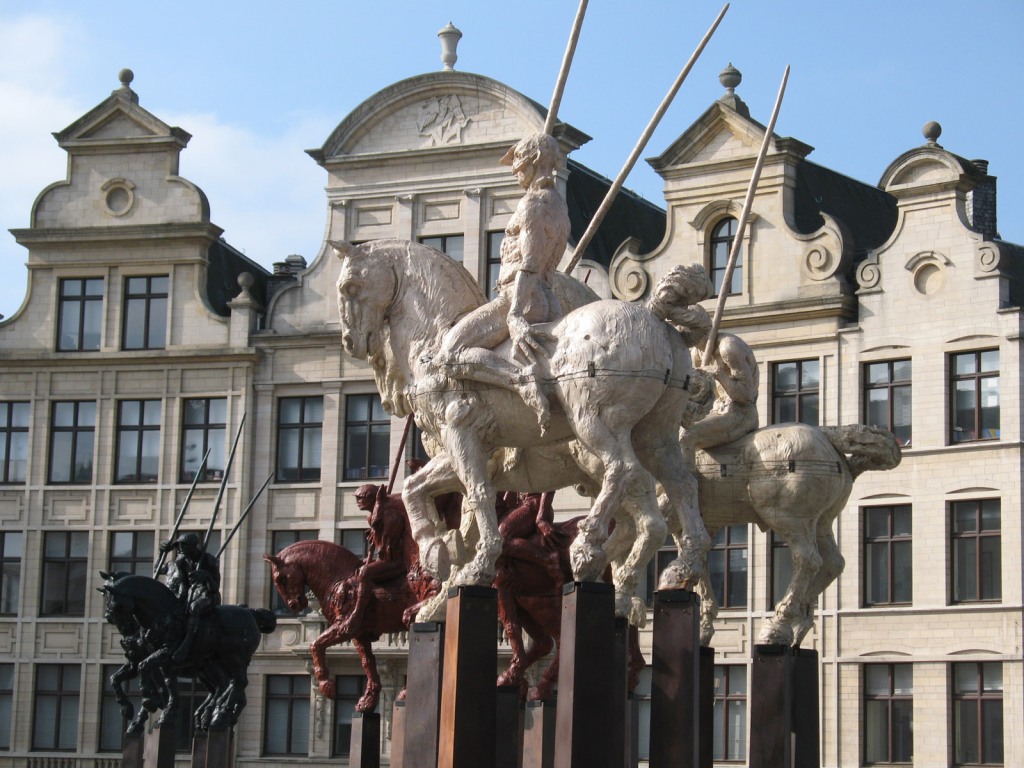
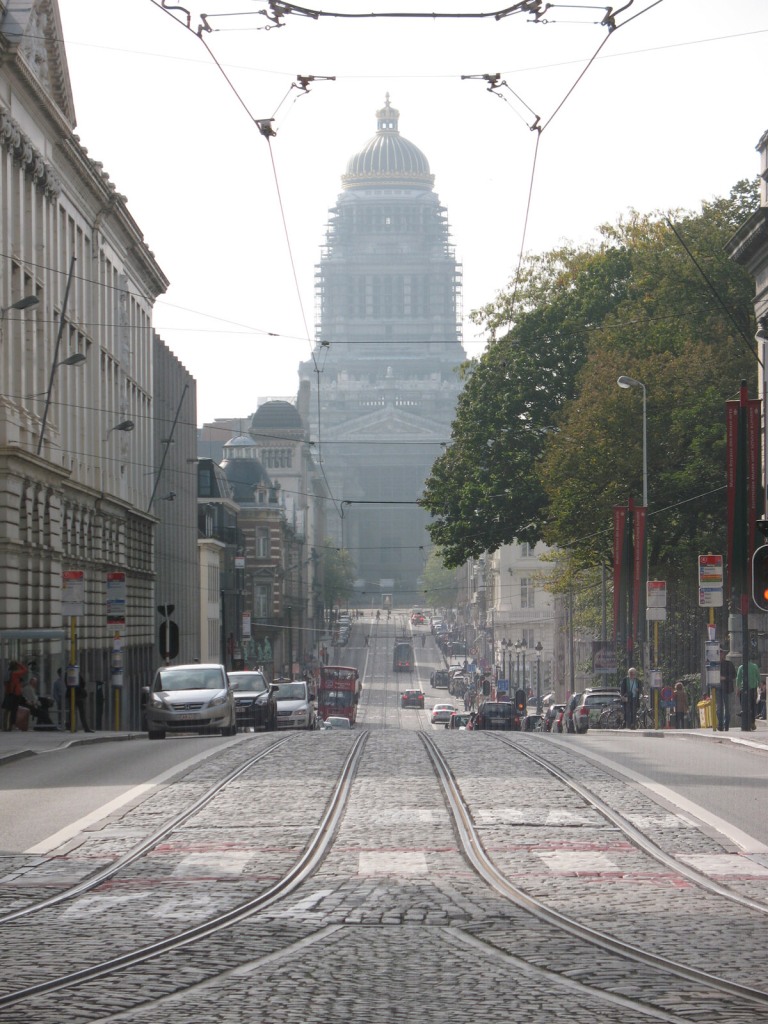
The Palais de Justice caught me completely by surprise, I had no idea that Brussels hosted a building such as this, on the scale of St Peter’s Basilica in the Vatican. It was deliberately built very large next to slum areas, to demonstrate the power and inescapability of the law. In tandem with the speed of legal process, the scaffolding had been up since 1984. And lawyers wonder why they continue to be vilified?
One of the entrance staircases to the Palais de Justice de Bruxelles. It’s a very pleasingly chunky neoclassical construction, dating from 1883, and it’s free to wander in for a look around.

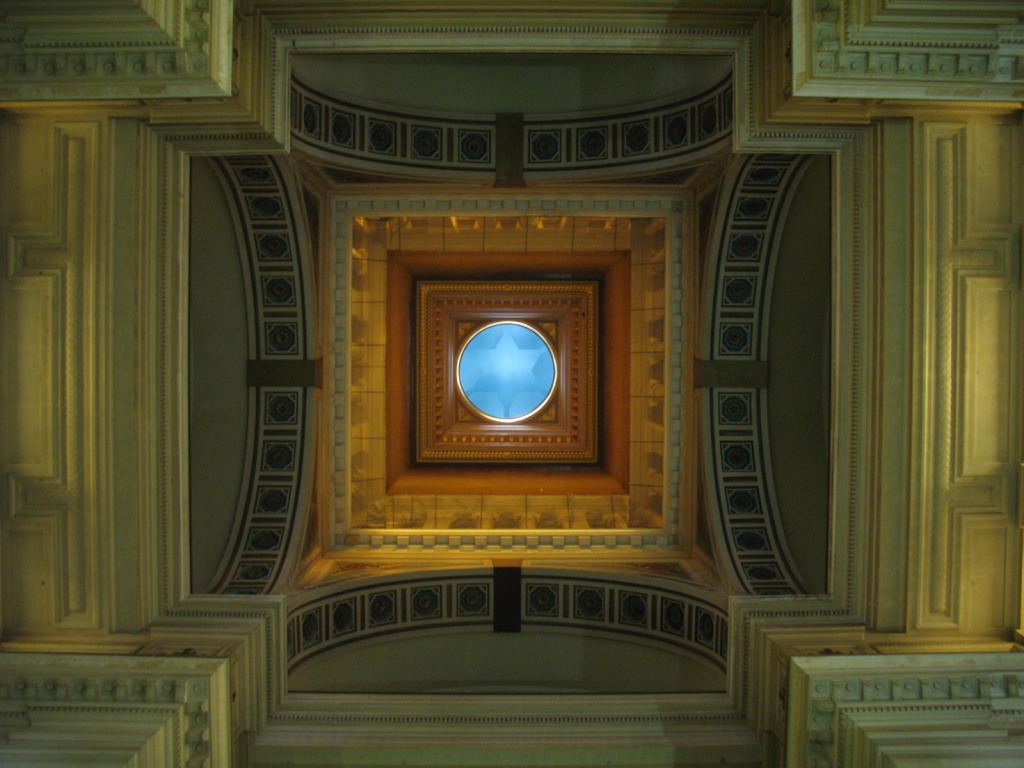
Inside the Palais de Justice, looking up at the central dome. The proportions of this building are monumental, indeed it was the largest building constructed anywhere in the world during the 19th century.
In the east of the city lies the European Parliament, the centre of the European Union. This complex is called the Espace Leopold, and standing outside is a remnant of the Berlin Wall, complete with graffiti.
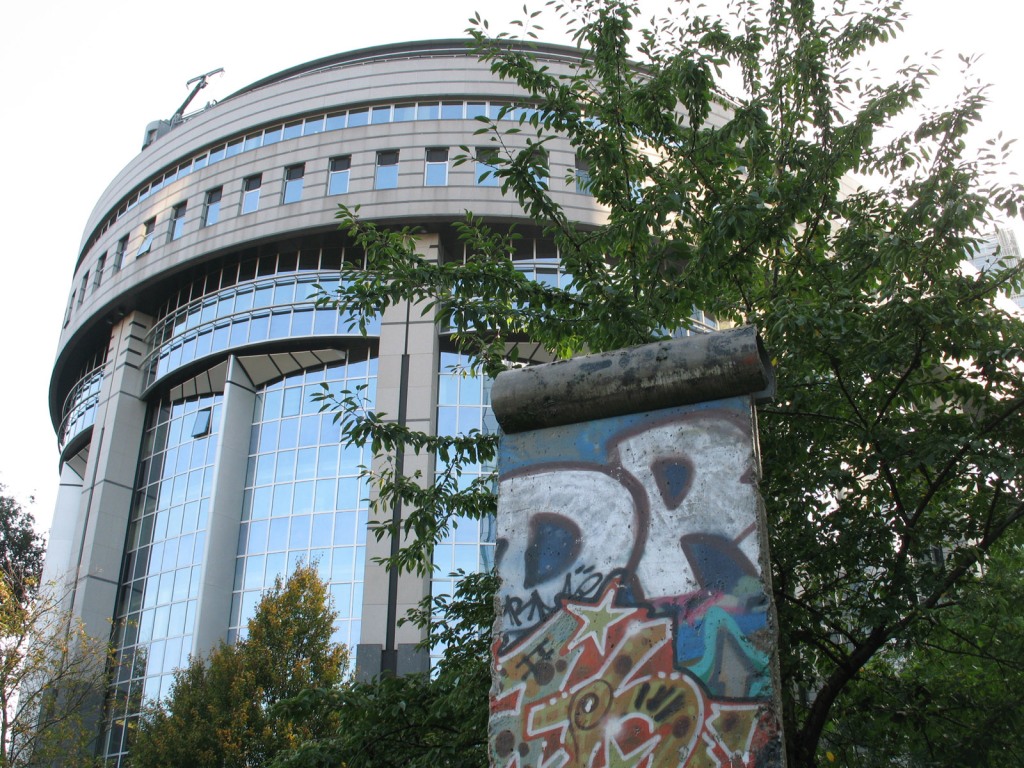
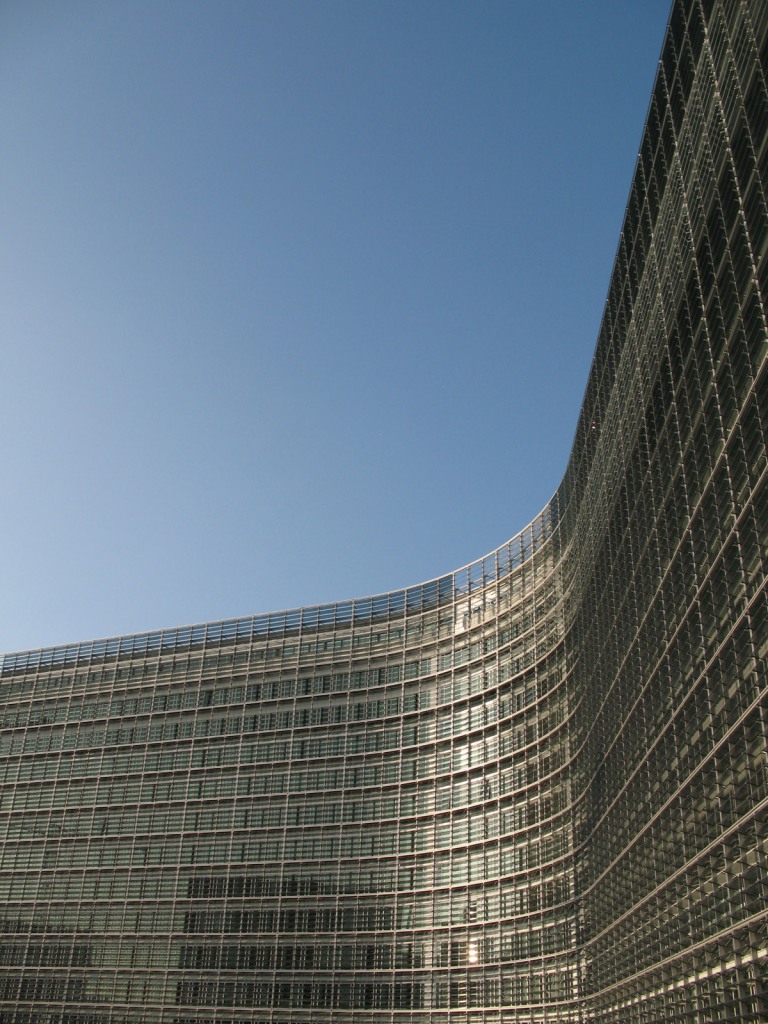
The European Commission Berlaymont building forms a glass and steel curtain around Schuman metro station. It is where the representatives from each of the member states get together, but commissioners are bound to act independently and are not affected by their own home governments.
Belgium has its own triumphal arch, the centrepiece of the Parc du Cinquantenaire in the European Quarter of Brussels. It was built in 1905 at the time of the 75th anniversary of Belgian independence, and is more Brandenburg Gate than Arc de Triomphe.
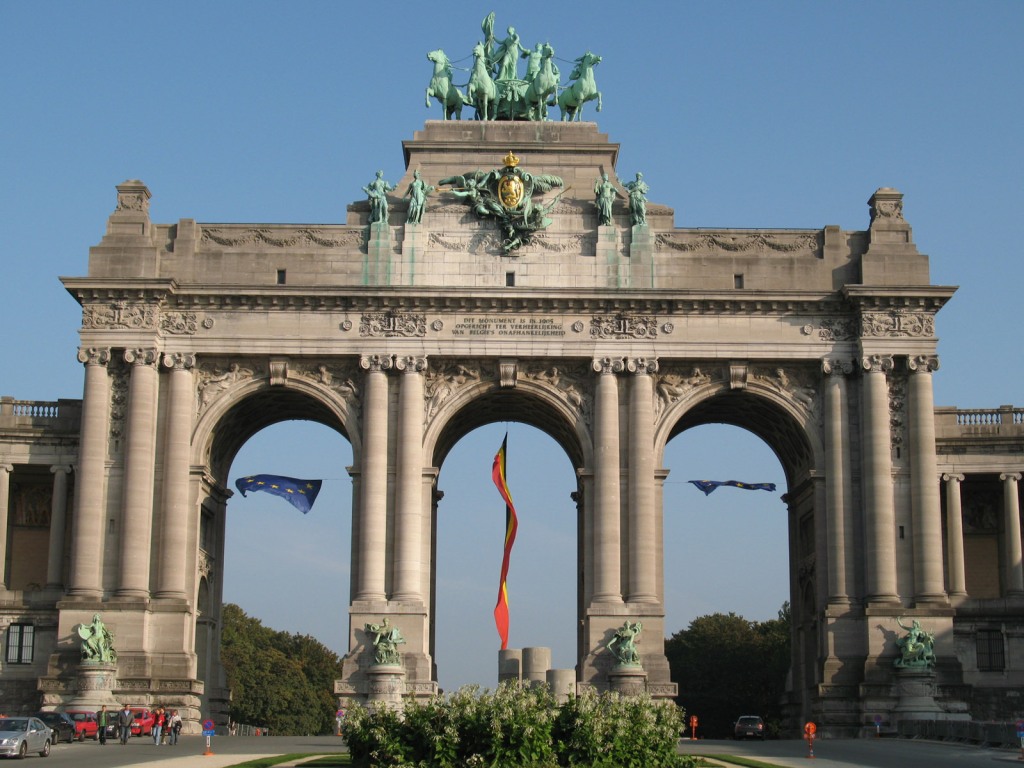

Another of Belgium’s most famous icons and probably my favourite, the Atomium was built for the World’s Fair in 1958. In the mid 2000s it was given a very shiny makeover, and now looks great glinting in the sunlight.
The Atomium is a representation of an iron crystal structure, body centred cubic for those of you familiar with metallurgy, and magnified 165 billion times.
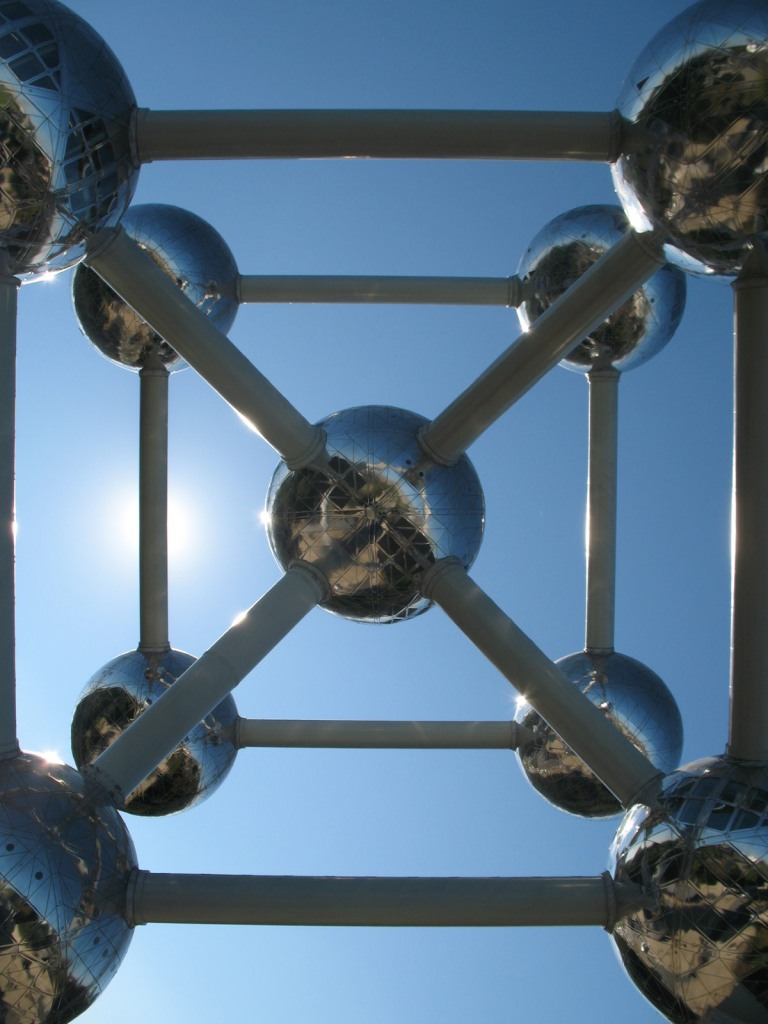
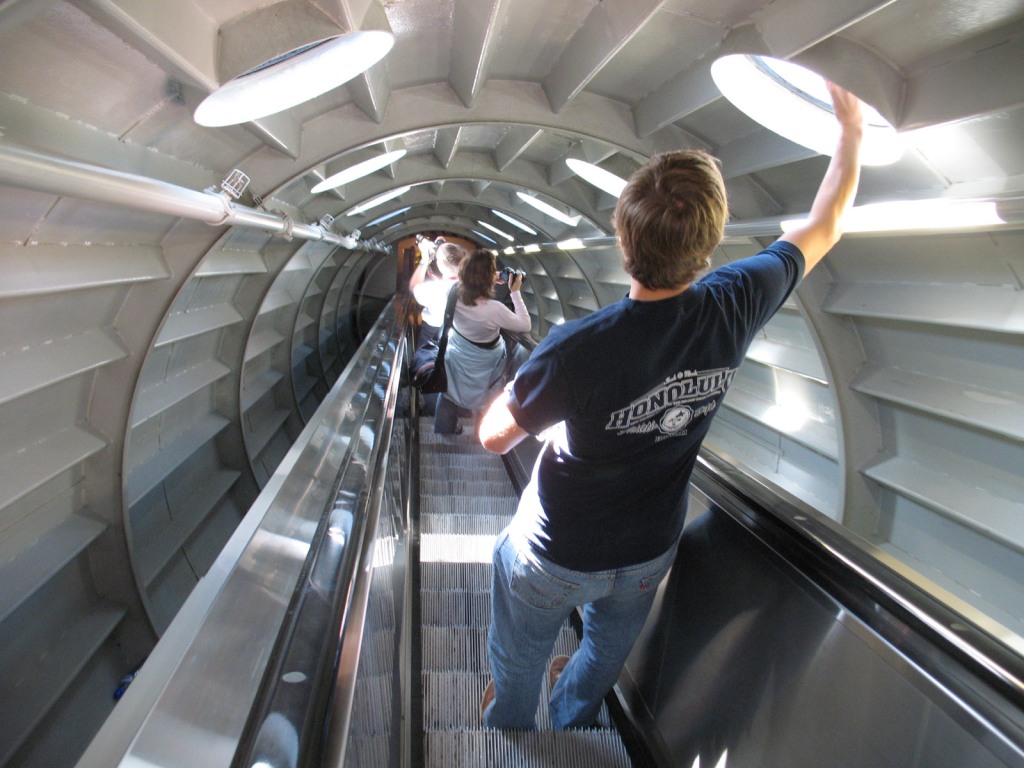
It’s possible to take a lift up to the top of the Atomium, and to traverse the chemical bonds by stairs and escalators.
A close up view of three of the stainless steel-clad Atomium pods, each one eighteen metres in diameter. Until 2016, draconian copyright rules prevented me or any other private individual from publishing pictures of the Atomium, or they would have done if I’d paid them any attention.
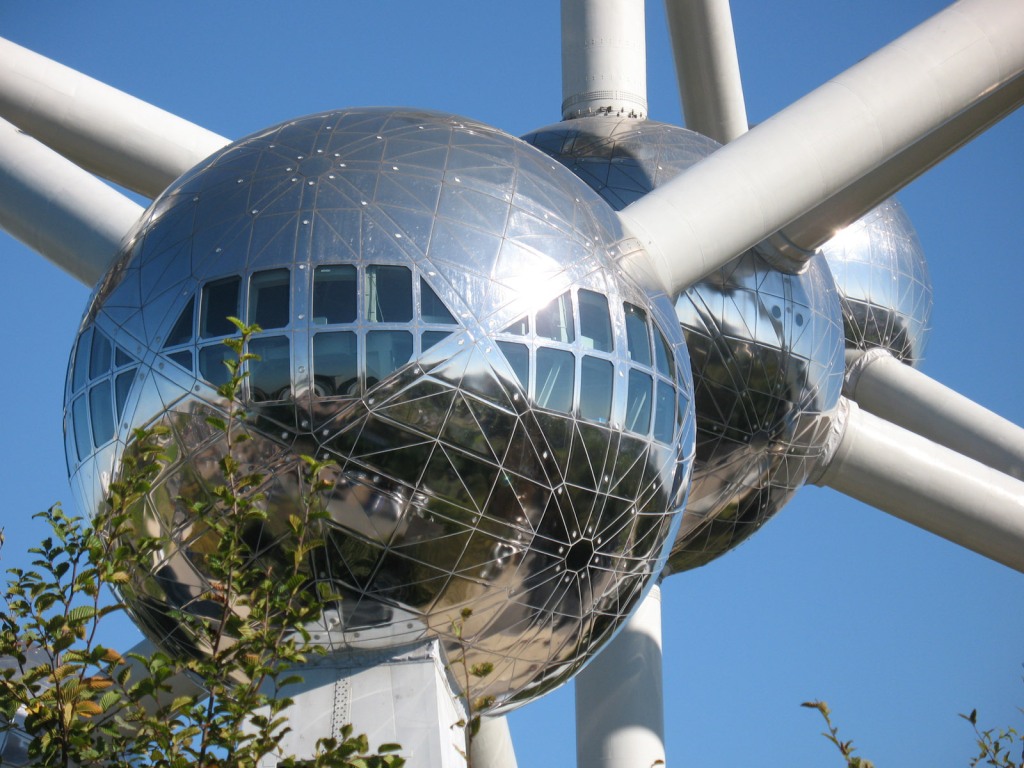
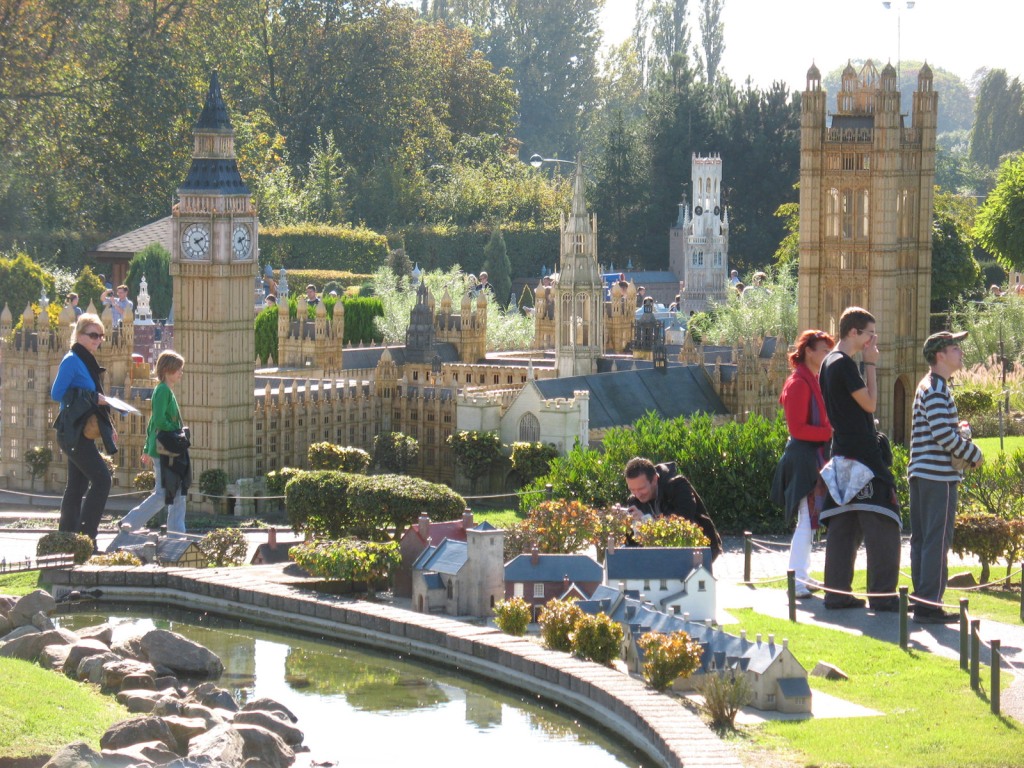
Mini Europe model village does just what it says on the tin, representing all current member states of the European Union in miniature. Some of the newer members are perhaps a little under-represented however, and presumably the mini Palace of Westminster was quietly demolished following Brexit in 2016.
In a western district of Brussels looms the giant Basilique de Koekelberg, the Basilica of the Sacred Heart. It ended up looking very different from the original gothic plans, as its construction was interrupted by two world wars. The final art deco style is unusual for a basilica of this size.
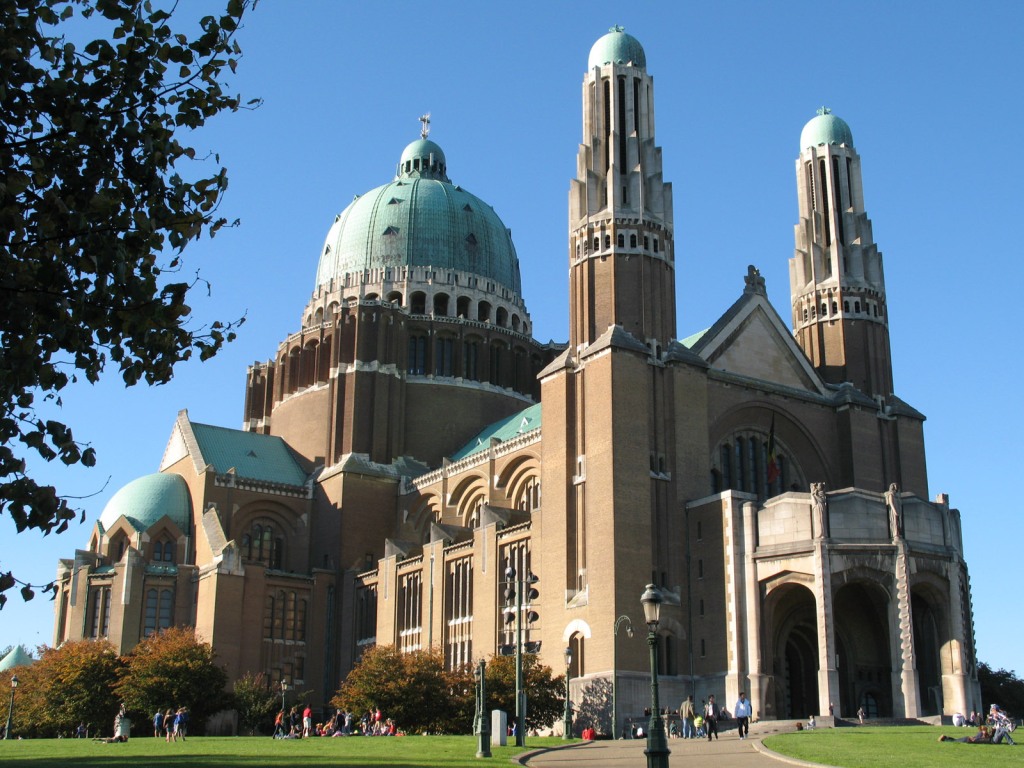

Back in town I came across this dog in effigy marking its territory. Zinneke Pis is one of the relatives of Manneken Pis, the other being his sister Jeanneke Pis who squats in a lane near Rue des Bouchers.
Night view of the Grand Place, with the Hotel de Ville dominating the scene. Truly this is one of the most beautiful squares in Europe.
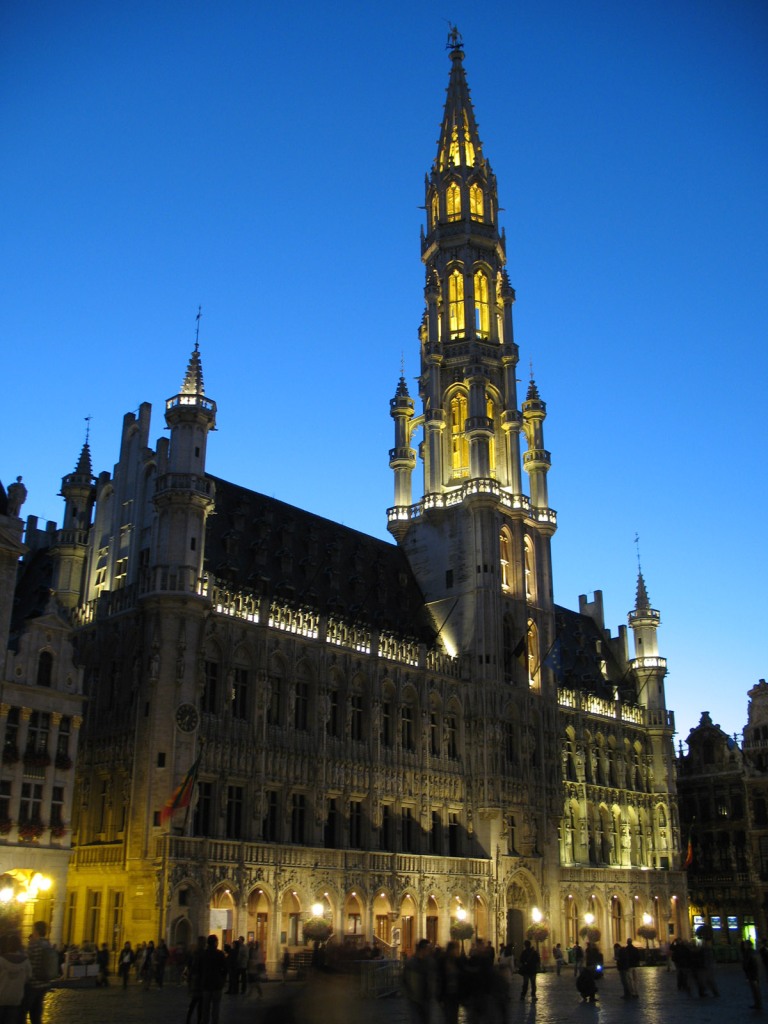
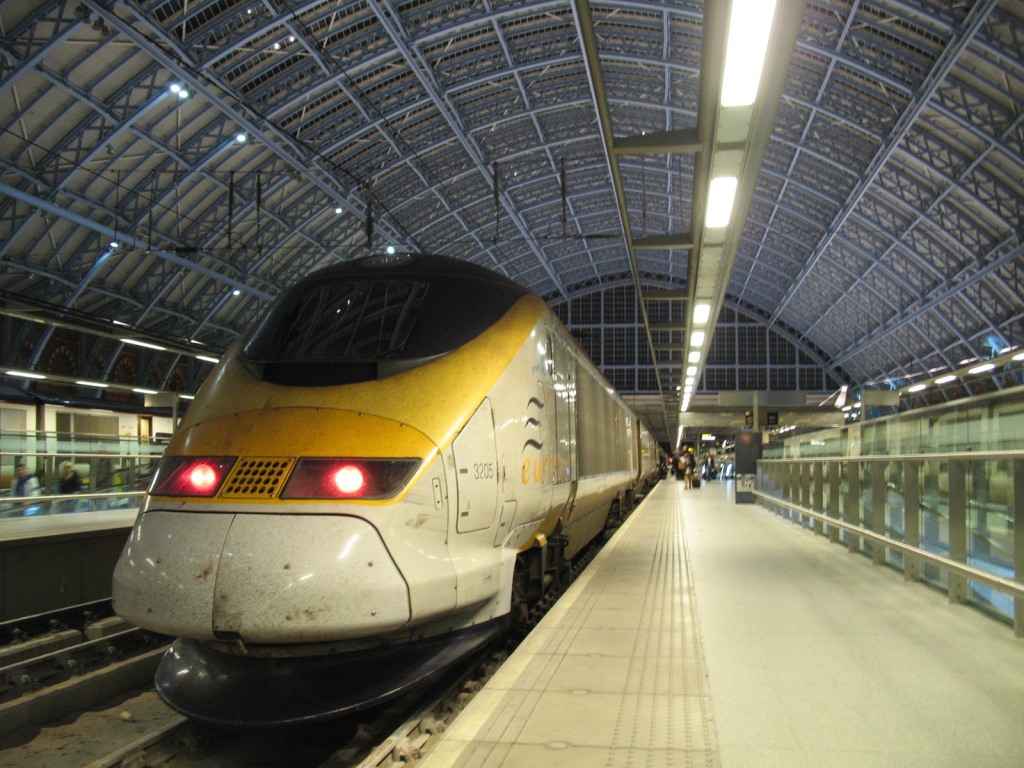
At the end of my trip, I headed back to the UK in the comfort of the Eurostar, the high speed rail link which took me through the Channel Tunnel and back to London St Pancras station from Brussels-Midi/Zuid in less than two hours. Fantastic.
Created 2011 | Updated 2013, 2023
